#Civil Engineering
Text
Ok, I recently wrote an essay [here] talking about the definition and duties of civil engineering as well as the ethics because of the brain rot @swordfright gave me with calling Dream Sam’s ultimate engineering project. So, because I actually am a civil engineer I took it upon myself to design the title and summary of quantities sheets just like I do at work for roads but with Dream as the project instead. And in honor of angst day sponsor by @sixteenth-day-event, I figured I’d share it because I feel like it kinda works for the prison of the mind prompt.
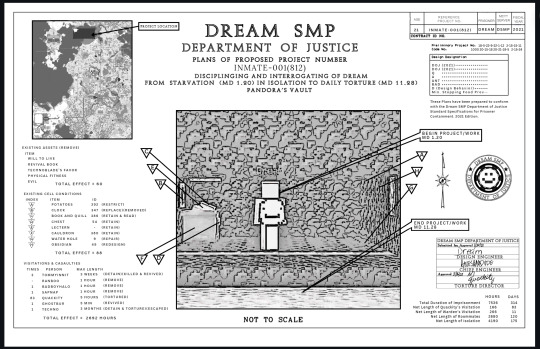

“Sam’s “ultimate engineering project” he deemed too damaged like a bumpy road or crumbling building that wasn’t worthy of patching and filling in the cracks or reinforcing, that’s too eroded to be fixed and preserved. So, Sam strived to tear him down to the bedrock so he could remake, remold, and reengineer Dream according to his design for the common safety, public health and well-fair.”
{These are very similar to the actual sheets I make day to day, which I shall not share for the sake of doxing my location, but yea pretty much everything has a significance. Some of it doesn’t necessarily make sense but that was because I was more so taking inventory of what we see in lore (so you know I counted ;) lol)}
#sixteenthdayevent#AAANNNNNGGST#Ah and now you see why I’ve been digging up all the prison lore and inventories ;D…. my brain rot is too powerful#still never got wardens torment enchants though :( did for the shovel and how which I’ll now have to write torture scenes for…#so ummm stay tuned for that in Misery Loves An Idiot… Dream going to have lots of fun I’m sure >:)#c!dream#dsmp#dreblr#dream smp#dsmp dream#dsmp analysis#dsmpblr#prison arc#dsmp art#pandora’s vault has a singular purpose#pandora’s vault#c!dream fanart#blue does art apparently#ah Sam… such a good engineer… if only he realized Dream was a person not a condemned structure oof#if y’all are curious enough I might share a irl work example with different numbers and stuff but didn’t want to bore you XD#happy angst day :)… wait isn’t that everyday? lol#can we talk about how I’ve done all of these prompts as descriptions of metaphors and stuff kinda funny#civil engineering
178 notes
·
View notes
Text
The Channel Tunnel
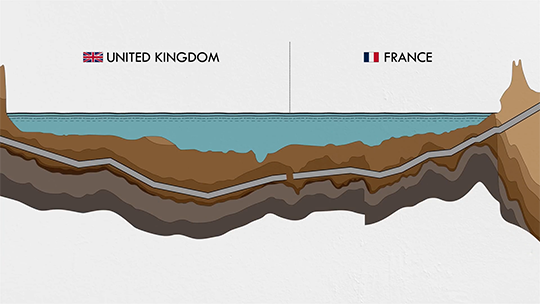
To celebrate the 30th anniversary of the Channel Tunnel, Practical Engineering takes a look back at the construction and operation of this incredible piece of infrastructure. (Image and video credit: Practical Engineering)
Read the full article
140 notes
·
View notes
Text
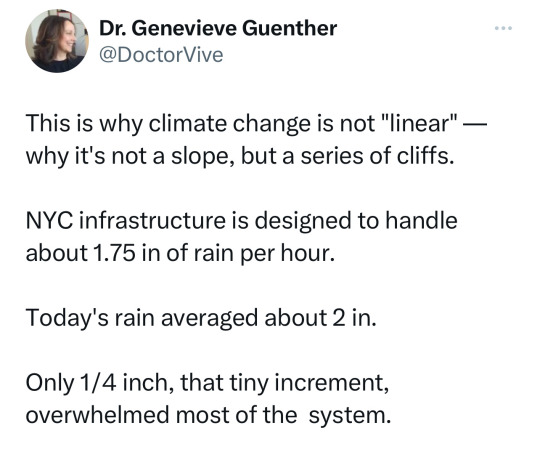

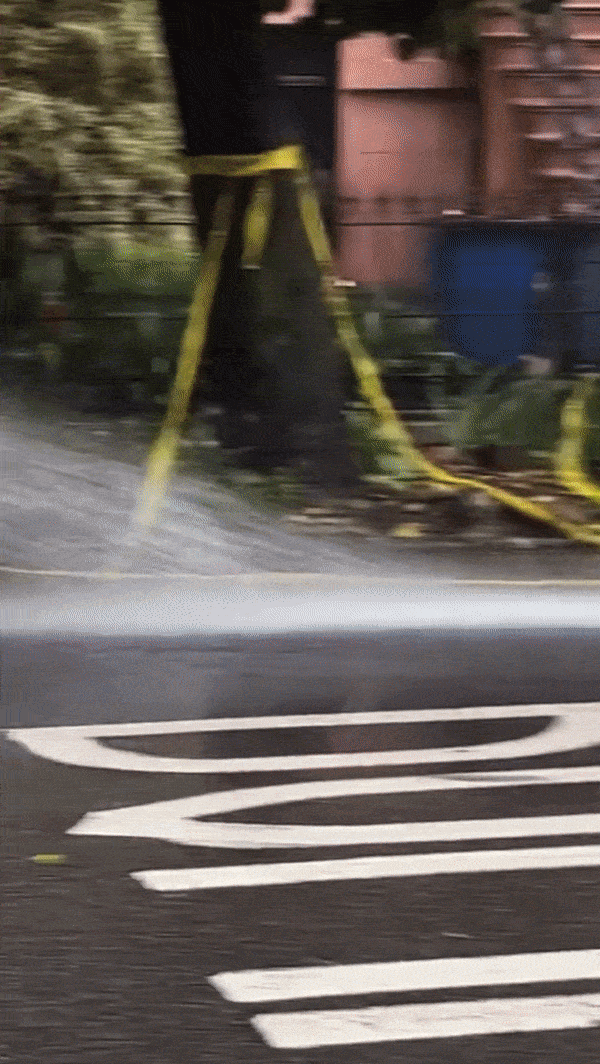
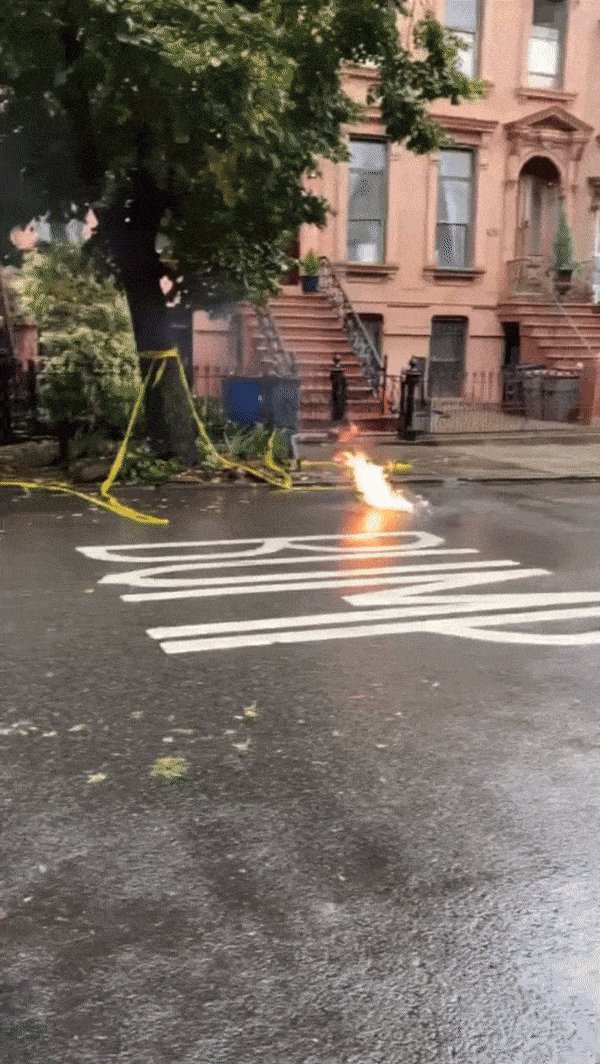



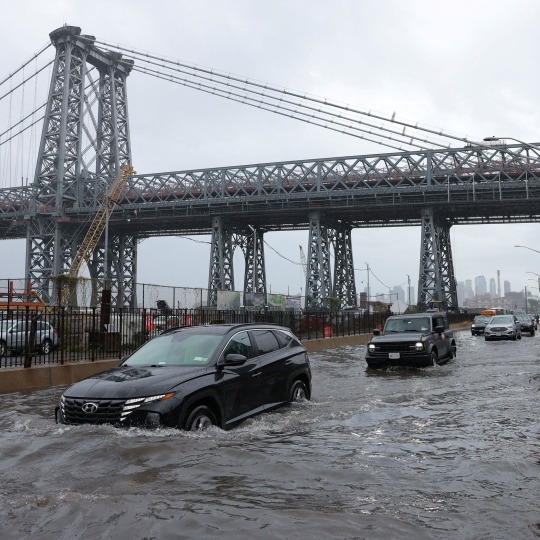
Nothing to see here, just fire + floods + climate change
#politics#climate change#climate crisis#global warming#nyc#nyc flooding#nyc floods#climate collapse#civil engineering
29K notes
·
View notes
Text
"With “green corridors” that mimic the natural forest, the Colombian city is driving down temperatures — and could become five degrees cooler over the next few decades.
In the face of a rapidly heating planet, the City of Eternal Spring — nicknamed so thanks to its year-round temperate climate — has found a way to keep its cool.
Previously, Medellín had undergone years of rapid urban expansion, which led to a severe urban heat island effect — raising temperatures in the city to significantly higher than in the surrounding suburban and rural areas. Roads and other concrete infrastructure absorb and maintain the sun’s heat for much longer than green infrastructure.
“Medellín grew at the expense of green spaces and vegetation,” says Pilar Vargas, a forest engineer working for City Hall. “We built and built and built. There wasn’t a lot of thought about the impact on the climate. It became obvious that had to change.”
Efforts began in 2016 under Medellín’s then mayor, Federico Gutiérrez (who, after completing one term in 2019, was re-elected at the end of 2023). The city launched a new approach to its urban development — one that focused on people and plants.
The $16.3 million initiative led to the creation of 30 Green Corridors along the city’s roads and waterways, improving or producing more than 70 hectares of green space, which includes 20 kilometers of shaded routes with cycle lanes and pedestrian paths.
These plant and tree-filled spaces — which connect all sorts of green areas such as the curb strips, squares, parks, vertical gardens, sidewalks, and even some of the seven hills that surround the city — produce fresh, cooling air in the face of urban heat. The corridors are also designed to mimic a natural forest with levels of low, medium and high plants, including native and tropical plants, bamboo grasses and palm trees.
Heat-trapping infrastructure like metro stations and bridges has also been greened as part of the project and government buildings have been adorned with green roofs and vertical gardens to beat the heat. The first of those was installed at Medellín’s City Hall, where nearly 100,000 plants and 12 species span the 1,810 square meter surface.
“It’s like urban acupuncture,” says Paula Zapata, advisor for Medellín at C40 Cities, a global network of about 100 of the world’s leading mayors. “The city is making these small interventions that together act to make a big impact.”
At the launch of the project, 120,000 individual plants and 12,500 trees were added to roads and parks across the city. By 2021, the figure had reached 2.5 million plants and 880,000 trees. Each has been carefully chosen to maximize their impact.
“The technical team thought a lot about the species used. They selected endemic ones that have a functional use,” explains Zapata.
The 72 species of plants and trees selected provide food for wildlife, help biodiversity to spread and fight air pollution. A study, for example, identified Mangifera indica as the best among six plant species found in Medellín at absorbing PM2.5 pollution — particulate matter that can cause asthma, bronchitis and heart disease — and surviving in polluted areas due to its “biochemical and biological mechanisms.”
And the urban planting continues to this day.
The groundwork is carried out by 150 citizen-gardeners like Pineda, who come from disadvantaged and minority backgrounds, with the support of 15 specialized forest engineers. Pineda is now the leader of a team of seven other gardeners who attend to corridors all across the city, shifting depending on the current priorities...
“I’m completely in favor of the corridors,” says [Victoria Perez, another citizen-gardener], who grew up in a poor suburb in the city of 2.5 million people. “It really improves the quality of life here.”
Wilmar Jesus, a 48-year-old Afro-Colombian farmer on his first day of the job, is pleased about the project’s possibilities for his own future. “I want to learn more and become better,” he says. “This gives me the opportunity to advance myself.”
The project’s wider impacts are like a breath of fresh air. Medellín’s temperatures fell by 2°C in the first three years of the program, and officials expect a further decrease of 4 to 5C over the next few decades, even taking into account climate change. In turn, City Hall says this will minimize the need for energy-intensive air conditioning...
In addition, the project has had a significant impact on air pollution. Between 2016 and 2019, the level of PM2.5 fell significantly, and in turn the city’s morbidity rate from acute respiratory infections decreased from 159.8 to 95.3 per 1,000 people [Note: That means the city's rate of people getting sick with lung/throat/respiratory infections.]
There’s also been a 34.6 percent rise in cycling in the city, likely due to the new bike paths built for the project, and biodiversity studies show that wildlife is coming back — one sample of five Green Corridors identified 30 different species of butterfly.
Other cities are already taking note. Bogotá and Barranquilla have adopted similar plans, among other Colombian cities, and last year São Paulo, Brazil, the largest city in South America, began expanding its corridors after launching them in 2022.
“For sure, Green Corridors could work in many other places,” says Zapata."
-via Reasons to Be Cheerful, March 4, 2024
#colombia#brazil#urban#urban landscape#urban planning#cities#civil engineering#green architecture#green spaces#urban heat#urban heat island effect#weather#meteorology#global warming#climate change#climate hope#climate optimism#climate emergency#climate action#environment#environmental news#city architecture#bicycling#native plants#biodiversity#good news#hope#solarpunk#ecopunk#hopepunk
12K notes
·
View notes
Photo


нιroѕнι aвe aѕ lυcιυѕ
Thermae Romae (2012) · dir. Hideki Takeuchi
#perioddramaedit#filmedit#hiroshi abe#ancient rome#roman empire#architecture#filmgifs#moviegifs#civil engineering#roman baths#2nd century#pax romana#thermae romae#film#movie#beautiful men
8K notes
·
View notes
Text

Bacunayagua bridge, Cuba, 1974. From the Budapest municipal photography company archive.
220 notes
·
View notes
Text

Civil Engineering
March 1967.
From the Husband & Co Library, Sheffield.
63 notes
·
View notes
Text
How to stay focused when studying.
Staying focused while studying can be challenging, but here are some tips that might help:
Record Yourself Studying: Set up your webcam or phone camera to record a video of yourself studying. This creates accountability and can help you stay focused.
Use Focusmate: This tool pairs you with a real-life accountability partner. You must turn on your webcam during the study session, which can help you stay on task.
Prepare Mentally: If you don’t feel like starting work, take a minute to prepare yourself mentally. Set a timer for a minute and tell yourself that you’ll start work when the timer goes off.
Eliminate Distractions: Reduce or get rid of as many distractions as possible. This could include moving to a quiet area, turning off notifications on your phone, or closing out of non-essential programs on your computer.
Drink Coffee in Small Doses: Caffeine can positively affect sustained attention, but it’s important to consume it in moderation.
Have a Study Plan: Organize your study plan and break it into small steps.
Use Smart Learning Techniques: Employ effective study techniques that work best for you.
Stay Fueled and Hydrated: Make sure you’re eating and drinking enough. Being hungry or dehydrated can affect your ability to concentrate.
Prioritize Sleep: Regular sleep is essential for maintaining focus. Aim for seven to eight hours of sleep each night.
Set Goals: Having clear goals for each study session can give you a sense of direction and make it easier to stay focused.
Remember, everyone is different, so what works for one person might not work for another. It’s important to try different strategies and see what works best for you. Good luck with your studies! 📚
#enggrblr#ama#studyblr#filipinostudyblr#studying engineering#civil engineering#engineering life#roadtoengr
95 notes
·
View notes
Text

From Civil Engineering Daily.
72 notes
·
View notes
Text
Remembering Rivers Past

Our landscapes have changed dramatically over the last 200 years of urban development, but traces of the land's past still remain. Many streams and rivers that once ran on the surface persist in underground culverts. Bruce Willen's "Ghost Rivers" installation highlights the path of one such waterway. (Image credits: Public Mechanics and F. Hamilton, see alt text; installation: B. Willen; via Colossal)
Read the full article
482 notes
·
View notes
Note
Hello, years ago you mentioned that it would be difficult to create a city grid on hilly terrain (like King's Landing). However, if one were to make a grid on rugged terrain, how would they do so?
It can be done, it’s just harder and more expensive.

Either you need to level out the terrain by leveling down the peaks and using the dirt to fill in the valleys, or you need to build a lot of streets and buildings on sharp inclines and (if necessary) build lots of stairs (like San Francisco), and/or elevated streets and viaducts (like Edinburgh…or Yharnum), with tunnels to connect areas of lower elevation separated by areas of higher elevation (like Seattle).

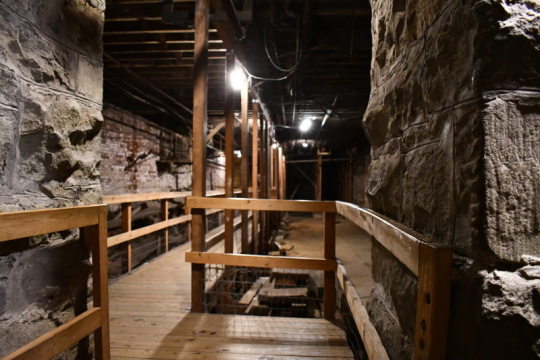
Or do a mix.
#asoiaf#asoiaf meta#medieval cities#city planning#urban geography#urban studies#urbanization#history#historical analysis#civil engineering
38 notes
·
View notes
Text
walkable cities is the colloquial term for what we in landscape architecture and civil engineering call "accessible infrastructure" which sort of has the inverse effect of making it seem exclusively focused on accessibility for the disabled. the goal for (respectable) professionals is to create a seamless city with as few catching points as possible for as few people as possible. This means it will be a "walkable" city (read: gives the most individuals the greatest degree of freedom to move between the most points). This Obviously includes people with mobility aids, it also includes parents with small children in strollers, and blind people, and those with cognitive disorders, and the elderly, and young children who should, in a functioning urban area, be able to take themselves to school, or a friend's house, or after school activities. there will never be only one solution to creating accessible infrastructure, which is why you should never trust someone claiming a single approach will solve everything. There will always be someone who needs a car, but if we create spaces which are less violently inhospitable to anyone outside a car, it opens up a lot of new interesting solutions to sustainable transportation.
anyways this has been my rant in response to someone else's very incorrect rant about how "walkable cities is an ableist framework and if you claim that people saying this is a psyop you're evil and cruel". I understand the person who made the post probably just doesn't understand the term or how it is used among the people actually designing things so I didn't want to dump this on their post. I also think the original post calling this (incorrect) position a psyop probably is just one misguided person reacting to other misguided people so like. not really on anyone's side here just trying to explain the actual intent behind the terms so maybe everyone can just calm down a little
#sorry for this lol#i just needed to get it out#it was making me mad that people think the ACTUAL ethos is just to Make everyone walk and bike everywhere#its just not trueeeee#long post#sustainable design#accessible design#accesible infrastructure#walkable cities#walkable infrastructure#walkable design#civil engineering#landscape architecture
359 notes
·
View notes
Text
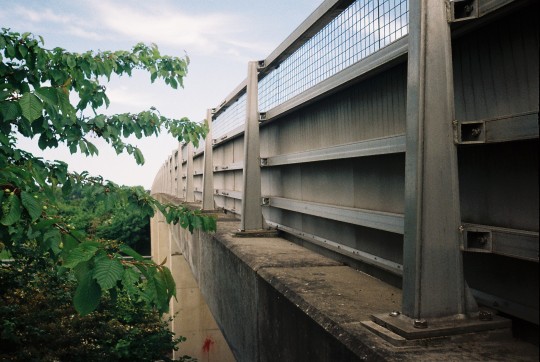
york 05/2023
#new topographics#empty spaces#point and shoot#35mm film#yorkshire#visual diary#york#infrastructure#road bridge#rural exploration#urban exploration#vacant#rural urban fringe#service station#petrol station#concrete#civil engineering#kodak colorplus 200#halina vision xms#film is not dead#point and click#35mm color film
58 notes
·
View notes
Text
Here's a link to a twitter thread about the costs and problems present when building underground.
You'll have to click "show more replies" to get the whole thread, but this is a great and informative read for anyone wanting to do worldbuilding that involves underground structures!
69 notes
·
View notes
Text

Erzsébet bridge under construction, Budapest, 1901. From the Budapest Municipal Photography Company archive.
66 notes
·
View notes